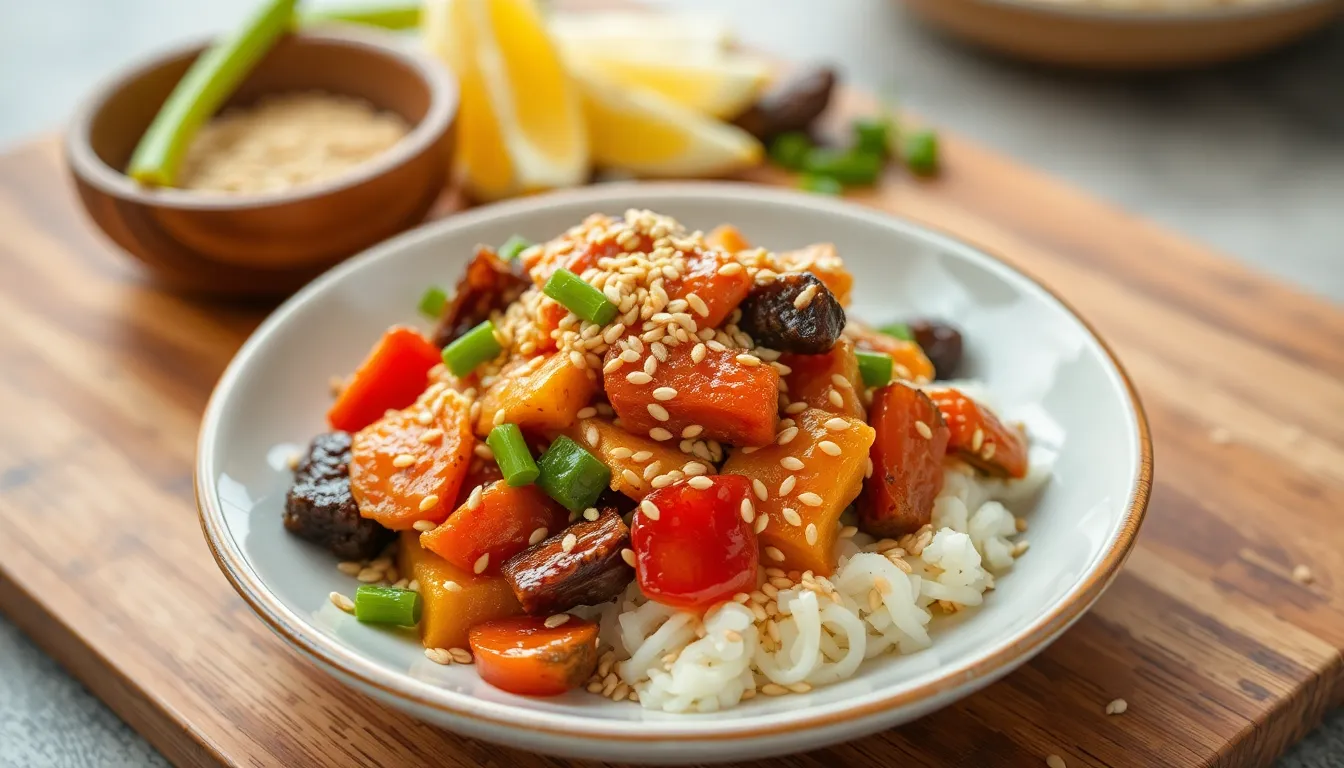Cooking with Sesame Seeds: A Flavorful Addition
Introduction
Sesame seeds have been a staple in various cuisines for thousands of years, treasured not only for their nutty flavor and crunchy texture but also for their rich nutritional profile. These tiny seeds, originating from the Sesamum indicum plant, hold historical significance, having been utilized in ancient civilizations such as Egypt and Mesopotamia, as well as in modern dishes across Asia, the Middle East, and beyond.
Beyond their culinary appeal, sesame seeds are packed with health benefits, making them a great addition to any diet. In this article, we will explore the versatility and nutritional benefits of sesame seeds, how to incorporate them into your cooking, and creative recipes that showcase their unique flavor. Whether you’re a seasoned chef or a novice in the kitchen, sesame seeds can elevate your dishes to new heights!
Section 1: The Versatility of Sesame Seeds
1.1 Types of Sesame Seeds
When it comes to sesame seeds, you’ll typically find two main types: white and black. Both offer unique flavors and are used in different culinary applications.
- White Sesame Seeds: These are the most commonly used type in Western cuisine. They have a mild, nutty flavor and are often used for garnishing dishes and in baked goods.
- Black Sesame Seeds: With a more intense flavor and slightly sweeter taste, black sesame seeds are frequently used in Asian cuisine. They are not only flavorful but also visually striking, adding a beautiful contrast to any dish.
1.2 Culinary Uses
Sesame seeds can be utilized in numerous ways in the kitchen. Here are some popular culinary uses:
- Garnishing: Sprinkle sesame seeds on salads, stir-fries, or soups to enhance flavor and add texture.
- Sauces and Dressings: Use tahini (ground sesame seeds) to create rich dressings or dips like hummus.
- Baked Goods: Incorporate sesame seeds into bread, bagels, or cookies for added crunch and flavor.
Section 2: Health Benefits of Sesame Seeds
2.1 Nutritional Profile
Sesame seeds are nutritionally dense, providing a wealth of health benefits. They are rich in:
- Healthy Fats: Sesame seeds contain polyunsaturated and monounsaturated fats, which are beneficial for heart health.
- Protein: They are an excellent source of plant-based protein, making them ideal for vegetarians.
- Minerals: Sesame seeds are packed with essential minerals such as calcium, magnesium, phosphorus, and iron.
2.2 Potential Health Benefits
In addition to their nutritional profile, sesame seeds offer several potential health benefits:
- Heart Health: The healthy fats and antioxidants in sesame seeds may help reduce cholesterol levels and lower the risk of heart disease.
- Bone Health: Rich in calcium and magnesium, sesame seeds can contribute to higher bone density.
- Antioxidant Properties: Sesame seeds contain lignans and other antioxidants that can help combat oxidative stress in the body.
Section 3: How to Incorporate Sesame Seeds in Your Cooking
3.1 Cooking Techniques
There are simple techniques to enhance the flavor of sesame seeds in your cooking:
- Toasting Sesame Seeds: Toasting sesame seeds in a pan over medium heat brings out their nutty flavor. Stir frequently until they turn golden brown and fragrant.
- Using Sesame Oil: Sesame oil, made from pressed sesame seeds, is a flavorful addition to dressings, marinades, and stir-fries.
3.2 Recipe Ideas
Here are some simple recipes featuring sesame seeds that you can try at home:
| Recipe Name | Main Ingredients | Cooking Time | Serving Size |
|---|---|---|---|
| Sesame Chicken | Chicken, sesame seeds, soy sauce | 30 minutes | 4 servings |
| Tahini Salad Dressing | Tahini, lemon juice, garlic | 10 minutes | 6 servings |
| Sesame Crusted Tofu | Tofu, sesame seeds, spices | 25 minutes | 2 servings |
| Sesame Noodles | Noodles, sesame oil, vegetables | 20 minutes | 4 servings |
Section 4: Creative Ways to Use Sesame Seeds
4.1 Snacks and Appetizers
Sesame seeds can also be used creatively in snacks and appetizers:
- Sesame Seed Crackers: Mix sesame seeds with flour and spices to create delicious homemade crackers.
- Energy Bars with Sesame: Combine sesame seeds with nuts and dried fruits for a nutritious energy boost.
4.2 Desserts
Don’t forget about desserts! Here are some sweet ideas:
- Sesame Seed Cookies: Incorporate sesame seeds into your favorite cookie recipes for added flavor.
- Halva: This traditional Middle Eastern sweet made from sesame paste is rich and indulgent.
Section 5: Tips for Storing and Buying Sesame Seeds
5.1 How to Choose Quality Sesame Seeds
When purchasing sesame seeds, consider the following tips:
- Look for seeds that are plump, whole, and free from any discoloration.
- Choose organic options when possible to avoid pesticides.
5.2 Best Storage Practices
Proper storage can help maintain the freshness of sesame seeds:
- Airtight Containers: Store sesame seeds in airtight containers to prevent moisture and oxidation.
- Refrigeration Tips: For longer shelf life, keep sesame seeds in the refrigerator or freezer to maintain their flavor and nutritional quality.
Conclusion
Sesame seeds are a remarkable ingredient that can enhance the flavor and nutritional value of many dishes. Their versatility allows them to shine in various culinary applications, from savory to sweet. By incorporating sesame seeds into your cooking, not only will you enjoy their unique taste, but you’ll also benefit from their numerous health benefits.
We encourage you to experiment with sesame seeds in your kitchen. Whether you’re toasting them for a salad, making homemade tahini, or adding them to baked goods, the possibilities are endless. Don’t forget to share your own sesame seed recipes in the comments below!
Additional Resources
Call to Action
If you enjoyed this article and want to discover more cooking tips and recipes, subscribe to our blog for updates. Happy cooking!




